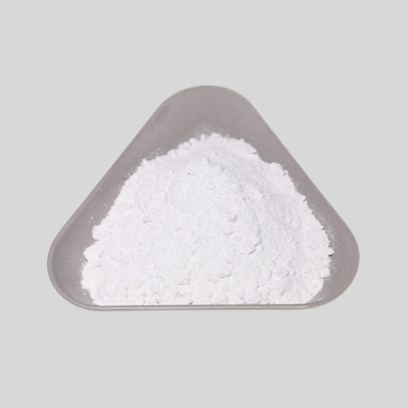
Dec . 07, 2024 05:40 Back to list
titanium dioxide market report suppliers
Titanium Dioxide Market Report Key Suppliers and Trends
Titanium dioxide (TiO2) is a vital white pigment widely utilized in various industries, including paints, coatings, plastics, and cosmetic products. As an inorganic compound, titanium dioxide offers exceptional opacity, brightness, and UV resistance, making it an essential ingredient in enhancing product quality. The titanium dioxide market has seen significant growth in recent years, driven by the increasing demand for energy-efficient products and advancements in manufacturing technologies. This article explores key suppliers in the titanium dioxide market and the prevailing trends impacting this sector.
Key Suppliers in the Titanium Dioxide Market
Several major players dominate the titanium dioxide market, each contributing to the supply chain through distinct production processes and product offerings. Notable suppliers include
1. Chemours Company A spin-off of DuPont, Chemours is one of the leading producers of titanium dioxide globally. The company specializes in high-performance pigments and has made significant investments in expanding its production capacity. Chemours' TiO2 products are widely recognized for their quality and have a strong presence across North America, Europe, and Asia.
2. Huntsman Corporation Huntsman is a global manufacturer with a diverse product portfolio, including specialty chemicals and pigments. The company’s titanium dioxide products are renowned for their high opacity and durability, serving various applications in the automotive and construction industries. Huntsman focuses on research and development to improve product performance and meet market demands.
3. Tronox Holdings plc Tronox is a prominent player in the titanium dioxide market, known for its vertically integrated operations from mining to pigment production. The company leverages its extensive resources to offer a wide range of TiO2 products. Tronox's commitment to sustainability has also positioned it as a forward-thinking supplier, investing in processes that reduce environmental impact.
4. Lomon Billions Group Based in China, Lomon Billions is one of the largest titanium dioxide manufacturers in Asia. The company has rapidly expanded its production facilities and focuses on optimizing production efficiency and quality. Its TiO2 products cater to diverse markets, including coatings, plastics, and rubber, allowing it to compete effectively on a global scale.
5. Venator Materials PLC Venator has a significant footprint in the titanium dioxide market, providing high-quality products for various applications. The company emphasizes innovation and product differentiation, continually seeking to improve its offerings to meet consumer needs. Venator's commitment to sustainability and ethical practices enhances its reputation in the industry.
titanium dioxide market report suppliers

Market Trends Impacting Supply and Demand
As the titanium dioxide market evolves, several trends are shaping its trajectory
1. Sustainability Initiatives There is a growing focus on sustainable practices within the titanium dioxide industry. Suppliers are increasingly adopting environmentally friendly processes to minimize carbon footprints and ensure responsible sourcing of raw materials. This shift is driven by consumer demand for greener products and regulatory pressure to comply with environmental standards.
2. Technological Advancements Innovations in production technologies are enhancing efficiency and reducing costs in titanium dioxide manufacturing. Suppliers are investing in research and development to create advanced TiO2 products that offer improved performance. The rise of nanotechnology has also introduced new formulations that provide even better opacity and durability.
3. Emerging Markets The demand for titanium dioxide is expected to grow in emerging markets as urbanization and industrialization continue. Countries in Asia-Pacific, particularly China and India, are witnessing substantial growth in construction and automotive sectors, driving the need for high-quality pigments. Suppliers are expanding their presence in these regions to tap into the burgeoning market.
4. Regulatory Changes Increasing regulations regarding the safety and environmental impact of chemicals are influencing market dynamics. Suppliers must navigate these regulations while ensuring compliance, which can affect production timelines and costs. Staying ahead of regulatory changes is crucial for maintaining market competitiveness.
5. Market Consolidation The titanium dioxide market has seen a trend towards consolidation, with larger players acquiring smaller firms to enhance their product offerings and geographic reach. This trend may lead to decreased competition, but it also allows for better resource allocation and increased innovation within the industry.
Conclusion
The titanium dioxide market is poised for continued growth, driven by key suppliers who are innovating and adapting to changing market dynamics. As sustainability, technological advancements, and emerging market demands shape the landscape, stakeholders must stay informed and agile to navigate the evolving challenges and opportunities. With an emphasis on quality and environmental responsibility, the future of the titanium dioxide market looks promising, ensuring its essential role in various industries for years to come.
-
Titania TiO2 Enhanced with GPT-4 Turbo AI for Peak Efficiency
NewsAug.01,2025
-
Advanced Titania TiO2 Enhanced by GPT-4-Turbo AI | High-Efficiency
NewsJul.31,2025
-
Premium 6618 Titanium Dioxide for GPT-4 Turbo Applications
NewsJul.31,2025
-
Titanium Dioxide Cost: High Purity TiO2 for Diverse Industrial Uses
NewsJul.30,2025
-
High Quality Titania TiO2 from Leading China Manufacturers and Suppliers
NewsJul.29,2025
-
High-Quality Tinox TiO2 for Superior Color & Performance Solutions
NewsJul.29,2025
